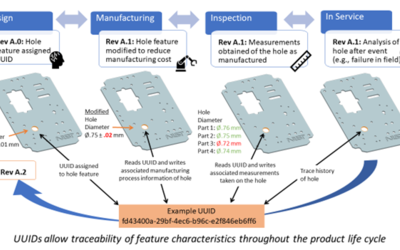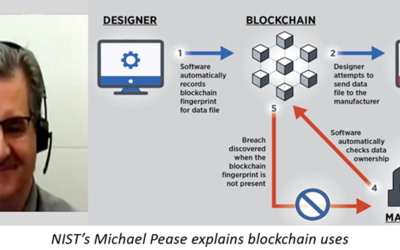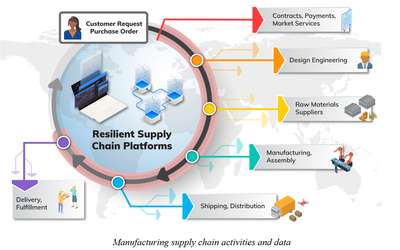The U.S. manufacturing industry accounts for $2.3 trillion in value added or 10.2 % of total GDP. It includes $5.7 trillion in net stock (i.e., intellectual property, structures, and equipment), is a critical component of the U.S. economy, and a major contributor to global manufacturing. As reported by the Bureau of Economic Analysis, manufacturing accounted for 31.4 % of U.S. research and development value added. In terms of total economic value added, the U.S. is the second largest manufacturing country in the world.
Promoting innovation and industrial competitiveness in manufacturing can often require understanding the economics of the industry. This might include examining the value and quantity of the goods produced, measuring stakeholder costs and losses, estimating the costs/benefits of potential technological advancements/adoptions, or developing methods for investment analysis. NIST has made a number of efforts to advance economic research in manufacturing. For instance, NIST’s Applied Economics Office webpage on Applied Economics in U.S. Manufacturing and the Technology Partnership Office’s NIST TPO Publications webpage provide multiple publications on manufacturing industry economics. Other entities within NIST aid manufacturers/stakeholders in advancing competitiveness along with publishing their own economic research.
U.S. Competitiveness and the Manufacturing Economy

Economic Statistics Report: NIST’s Applied Economics Office annually produces statistics characterizing the U.S. manufacturing economy. Three primary aspects of U.S. manufacturing competitiveness are discussed: (1) how the U.S. industry compares to other countries, (2) the trends in the domestic industry, and (3) the industry trends compared to those in other countries.
Compilation of Reports: NIST’s Manufacturing Extension Partnership (MEP) assembles a compilation of reports about manufacturing, which often focuses on economic issues.
Benchmarking Report for Manufacturing USA Network: A review of China's Manufacturing Innovation Centers (MICs) explores the status of the country's flagship manufacturing innovation program.
Economic Decision Making
Tools and Guides: The Applied Economics Office provides tools and guides for economic decision making in manufacturing that can aid manufacturers in making investment decisions. For instance, consider a manufacturer that has several investment options for improving efficiency and/or productivity, but can only afford one of them. The guides and tools for economic decision making can aid in identifying which investment to select.
ASME Subcommittee on Investment Analysis in Manufacturing: The Applied Economics Office is involved with ASTM and ASME in developing economic standards to facilitate advancing manufacturing competitiveness. This includes developing standards and guides for economic decision making and classification standards for costs/investments. Staff in the Applied Economics Office founded and continue to chair the subcommittee. Contact the chair if you are interested in joining.
Manufacturing Supply Chain
Supply chains include extensive complex networks that stretch around the globe. For instance, according to NIST AMS 600-12, 20.6 % of U.S. manufacturing intermediate goods/services were imported, resulting in 13.4 % of U.S. manufacturing output being of foreign origin. NIST economic research on supply chains includes mapping industry level costs using economic input-output analysis, estimating average industry flow times, and estimating losses due to disruption.
Supply Chain Cost Mapping (Multiple Reports)
Supply Chain Disruption (Multiple Reports)
Supply Chain Flow Time (Multiple Reports)
NIST Economic Impact Studies
Economic Impact Studies: In addition to the studies discussed above, NIST conducts some studies examining the impact of its research, including impacts in manufacturing. The studies include various subjects and can be found on the Technology Partnership Office page.
Economic Opportunities for Manufacturers and Other Stakeholders
Federal Funding Opportunities: The federal government offers various funding through bureaus and agencies to support manufacturers, including notices of funding opportunities (NOFOs), grants, loans, and tax credits. The NIST managed manufacturing page provides a listing of opportunities from the federal government.
Manufacturing Extension Partnership: The Manufacturing Extension Partnership Program (MEP) is a national network with hundreds of specialists who understand the needs of America's small and medium-sized manufacturers. The MEP National Network consists of MEP Centers located across the U.S. and in Puerto Rico. These trusted business advisors provide companies with services and access to public and private resources to enhance growth, improve productivity, reduce costs, and expand capacity.
Manufacturing Extension Partnership Competitive Awards Program: The National Institute of Standards and Technology (NIST) invites applications from current MEP Centers to add capabilities to the MEP Program, including the development of projects to solve new or emerging manufacturing problems, that are not already provided for under an applicant’s and its collaborating Center’s base MEP award.
MEP-Assisted Technology and Technical Resource (MATTR): This service offers clients of MEP Centers, small and medium-sized manufacturers (SMMs), direct access to wide-ranging, world-class technical expertise available at the National Institute of Standards and Technology (NIST) research laboratories and user facilities. MATTR is a way to help manufacturers find suitable solutions to their real-world problems.
Manufacturing USA: The Manufacturing USA network has 18 manufacturing innovation institutes. Through these national institutes, industry, academia, and government partners are leveraging existing resources, collaborating, and co-investing to nurture manufacturing innovation and accelerate commercialization. Each institute is designed to be a membership organization that provides vision, leadership, and resources to its members.
NIST Office of Advanced Manufacturing: The Office of Advanced Manufacturing (OAM) provides cost-shared funding to pursue innovative technology R&D and increase energy efficiency across the manufacturing sector. Solicitations may involve collaborative partnerships among manufacturers, universities, suppliers, national labs, and others. Funding is awarded through an open, competitive process. Project selections are based on merit-based criteria that emphasize potential energy, environmental, and economic benefits. A variety of funding opportunities are available to manufacturers from OAM and other organizations.
Technology Economics
NIST frequently investigates the economic impact that various technologies might have on the manufacturing economy. These might include the adoption of advanced maintenance or additive manufacturing. Some of these reports are conducted by the Applied Economics Office while others are provided by NIST’s Technology Partnership Office:
Additive Manufacturing
Costs, Benefits, and Value Added (Multiple Reports)
Technology Infrastructure Needs for Additive Manufacturing (Report)
Economic Impact of Technology Infrastructure for Additive Manufacturing (Analysis Brief)
Biomanufacturing
Estimate of the Biomanufacturing Economy (Report)
Cybersecurity
Cybercrime Losses to Industry (Report)
Efficiency, Smart Manufacturing, and Machinery Maintenance
Efficiency Investment Returns (Report)
Economic Impact of Technology Infrastructure for Advanced Manufacturing (Analysis Brief)
Technology Infrastructure needs for Smart Manufacturing (Report)
Economic Impact of Technology Infrastructure for Smart Manufacturing (Analysis Brief)
Manufacturing Machinery Maintenance (Multiple Reports)
Modeling and Digital Twins
Costs and Benefits of Digital Twins (Report)
Costs and Benefits of a Model Based Enterprise (Report)
Robotics and Automation
Economic Impact of Technology Infrastructure Needs for Advanced Robotics (Report)
Technology infrastructure needs for advanced Robotics and Automation (Report)
Roll-to-Roll Manufacturing
Technology Infrastructure Needs for Roll-to-Roll Manufacturing (Report)
Economic Impact of Technology Infrastructure for Roll-to-Roll Manufacturing (Analysis Brief)






